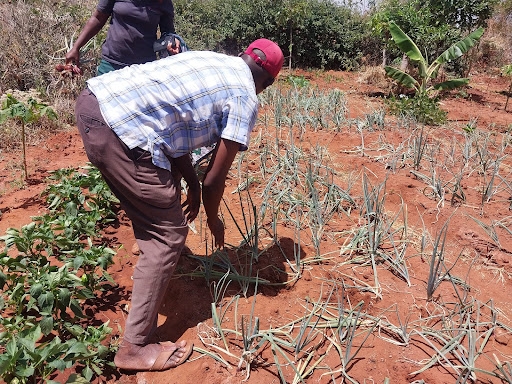
 Garissa governor Nathif Jama speaking to the press outside
his office after chairing the crisis meeting on the drought situation in the county./STEPHEN ASTARIKO
Garissa governor Nathif Jama speaking to the press outside
his office after chairing the crisis meeting on the drought situation in the county./STEPHEN ASTARIKOGarissa Governor Nathif Jama has raised an alarm over the worsening drought crisis in the county.
He has warned that the situation is fast deteriorating and
requires urgent, coordinated intervention from all partners.
Jama said the prolonged dry spell is already taking a heavy toll
on communities, livestock, and livelihoods across all subcounties.
He spoke after convening an emergency meeting with partners and
representatives from the national and county governments.
Four consecutive failed rainy seasons have left Garissa reeling
from acute water shortages, depleted pastures and rising food insecurity.
The latest National Drought Management Authority (NDMA) report
classifies the county’s drought status as “alert” with a worsening trend.
The report shows that more than 33,000 households are facing
starvation.
“The situation is grim,” Jama warned. “If urgent action is not
taken, we risk losing our livestock and wildlife. We must move swiftly — as
county and national governments — and call upon our partners, friends and
donors to help us manage this crisis,” Jama said.
The Council of Governors Asal committee chairperson said his
administration is currently trucking water to more than 200 settlements but
stressed the need to scale up the exercise as more families are affected daily.
Garissa deputy county commissioner Sabastian Okiring urged
development partners, humanitarian agencies and NGOs to step up their
interventions and coordinate closely with government structures for a timely
response.
“This is a situation that is getting dire,” Okiring said. “We
need collective effort to safeguard our people, livestock and wildlife.”
He said the national government, through NDMA, is engaging the
Kenya Meat Commission (KMC) to initiate commercial offtake as part of the
mitigation strategy.
NDMA county coordinator Abdinoor Dubow said while the two levels
of government are mobilising available resources, the forecast of below-average
rainfall underscores the need for more partners to join in.
Among the resolutions reached at the meeting were the repair and
maintenance of county water bowsers, coordinated efforts at the subcounty level
and the joint maintenance of boreholes to ensure an uninterrupted water supply as
open sources continue to dry up.
They also called for sustained action to prevent the crisis from spiralling into a full-scale humanitarian emergency.
Instant analysis
Garissa’s worsening drought paints a grim picture of the deepening climate crisis in Kenya’s arid north. Governor Nathif Jama’s alarm underscores how recurring failed rains are no longer isolated weather events but part of a larger pattern threatening lives, livelihoods, and the pastoral economy. The crisis also exposes long-standing gaps in preparedness and resource coordination between national and county governments. While emergency measures such as water trucking and livestock offtake offer temporary relief, experts warn that without sustained investment in climate-resilient infrastructure — from boreholes to water harvesting systems — Garissa and other ASAL counties remain dangerously vulnerable.












